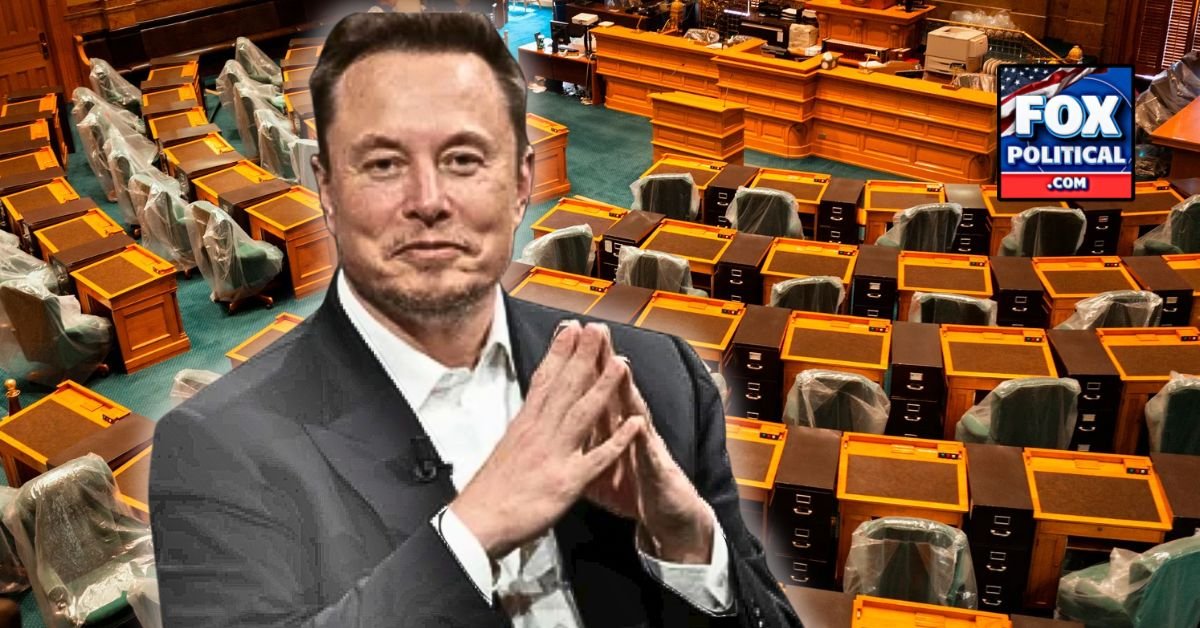Former President Donald Trump has made a surprising move. He plans to challenge the Biden administration’s plan to let federal workers work from home until 2029. This move shows the ongoing debate about work flexibility in the government.
The agreement was signed by Social Security Administration Commissioner Martin O’Malley and the American Federation of Government Employees (AFGE). It aims to make remote work permanent for over 40,000 federal employees. Trump wants to end this, following the advice of his top team members, Vivek Ramaswamy and Elon Musk. They think it could cut the federal workforce by 25%.
Key Takeaways
- Trump plans to challenge the Biden administration’s agreement that extends telework protections for federal workers until 2029.
- The deal was signed by Social Security Administration Commissioner Martin O’Malley with the American Federation of Government Employees (AFGE).
- Trump aims to end remote work for federal employees and has stated that those who do not return to the office will be dismissed.
- Ending work-from-home is a key priority for Trump’s advisers, Vivek Ramaswamy and Elon Musk, who believe it could lead to a 25% reduction in the federal bureaucracy.
- Trump’s move reflects the ongoing partisan divide over federal employee work arrangements and their impact on government operations.
Understanding Biden’s Federal Telework Extension Policy
The Biden administration has a big plan to let federal employees work from home until 2029. This move is to make government work better and attract the best people. The plan includes flexible work hours and better tech to help teams work together from afar.
Key Components of the 2029 Remote Work Plan
- Flexible work schedules, allowing federal employees to telecommute up to 4 days per week
- Enhanced digital tools and communication platforms to facilitate remote productivity
- Expanded training and professional development opportunities for remote workers
- Increased cybersecurity measures to ensure the integrity of government data and systems
Impact on Federal Workforce Operations
The new government telework regulations will change how the federal workforce works. Right now, only 10% of federal workers work from home. But the goal is to make more people work remotely.
However, not all jobs can be done from home. Over 50% of government jobs need to be done in person. The Biden administration thinks finding the right mix of remote and in-person work will make everyone happier and more productive.
Cost Analysis and Budget Implications
| Cost Saving Measures | Estimated Annual Savings |
|---|---|
| Reduced office space and infrastructure | $3.2 billion |
| Decreased energy and utilities expenses | $1.8 billion |
| Lower employee commuting reimbursements | $950 million |
| Total Estimated Savings | $5.95 billion |
The plan will cost a lot at first for new tech and security. But the savings from less office space and lower energy bills will make up for it. The goal is to make the federal workforce more efficient and effective.
Trump’s Bold Move: Challenging Biden’s Telework Plan for Federal Workers
Former President Donald Trump has opposed President Joe Biden’s plan to keep remote work for government employees until 2029. Trump’s move shows the deep divide between the two parties on work arrangements. Republicans want a return to traditional office work.
Trump believes that being in the office is key for government efficiency and accountability. He worries that remote work could lower productivity and weaken oversight. This is different from Biden’s goal to give federal employees more flexibility, especially after the COVID-19 pandemic.
“Ending work-from-home is a key priority for top advisers Vivek Ramaswamy and Elon Musk, who aim to increase government efficiency and reduce costs.”
Trump’s challenge is part of a bigger plan to change the federal workforce and how government works. His supporters, like Vivek Ramaswamy and Elon Musk, think remote work should be stricter. They believe it could cut down the federal bureaucracy a lot.
But, federal employee unions are worried about the impact on worker rights and job security. The partisan politics around this issue are still unfolding. The future of the trump vs biden agendas and the federal workforce is uncertain.
Historical Context: Federal Workplace Flexibility Policies
The shift to remote work in the federal government has been slow but significant. Past administrations have had different views on telework. The COVID-19 pandemic has influenced current debates on workplace flexibility, presidential executive orders, and government telework regulations.
Evolution of Government Remote Work Programs
Remote work in the federal government started in the 1990s. The Telework Enhancement Act of 2010 aimed to increase its use. Yet, progress was slow, and many agencies were hesitant to adopt workplace flexibility.
Previous Administration Approaches
The last administration was more strict on government telework regulations. They focused on in-person work, worried about productivity and oversight. Now, the current administration is more open to presidential executive orders that support workplace flexibility for federal employees.
Lessons from COVID-19 Remote Work Period
The COVID-19 pandemic led to a big increase in remote work in the federal government. Agencies had to adapt quickly. This experience has given valuable insights into the challenges and benefits of government telework regulations.
| Metric | Pre-Pandemic | During Pandemic |
|---|---|---|
| Federal Telework Participation | Around 6% of federal employees worked remotely 5 days per week | Over 90% of federal employees teleworked, with 33% being entirely remote |
| Government Office Occupancy Rates | N/A | Government buildings averaged only 12% occupancy |
| Taxpayer Costs for Federal Office Buildings | N/A | The government spends over $15 billion annually to lease and maintain federal office space |
The history of federal workplace flexibility policies offers insights into remote work challenges and opportunities. As policymakers move forward, lessons from the past and the pandemic will guide the future of government telework regulations.
Partisan Divide Over Federal Employee Work Arrangements
The debate over federal telework policies is caught up in partisan politics. Republicans and Democrats have very different views on remote work for government employees.
Republicans, like former President Donald Trump, want a return to in-office work. They believe it can make the government more efficient and save up to $2 trillion. Trump plans to challenge the agreement that extended telework protections until 2029, aiming to end remote work for federal workers altogether.
The Biden administration supports more flexible work options. The Social Security Administration Commissioner and the American Federation of Government Employees signed an agreement. This deal allows for up to four days of teleworking per week for over 40,000 federal employees.
- Only 10% of the federal workforce are in fully remote positions, while more than 60% of teleworking government employees spend the majority of their working hours at the office.
- Proposals from the “Department of Government Efficiency” suggest an expectation for mass reductions in force and cuts among federal contractors to reduce bureaucratic bloat.
- Concerns from federal workers include the potential end of the merit-based hiring system with the creation of Schedule F employees.
This partisan divide on federal workforce arrangements shows the big differences between the two parties. The debate’s impact on government efficiency, employee satisfaction, and public service delivery is a major point of contention.
Economic and Operational Implications of Extended Remote Work
The Biden administration wants government employees to work from home until 2029. This change will affect the economy and how things work. It’s important to watch how well remote work does and the costs of keeping everyone connected.
Productivity Metrics and Performance Analysis
It’s key to keep an eye on how well remote work is doing. Agencies must find ways to measure how much work is getting done. This will help decide if remote work is working out and make changes if needed.
Infrastructure and Technology Costs
Remote work means spending more on tech and keeping it safe. Agencies need to make sure their systems can handle a big remote team. They’ll have to budget for computers, cameras, and software to keep everyone connected.
Impact on Federal Real Estate Management
More people working from home could mean less need for office space. This might lead to fewer buildings. Agencies will have to figure out what space they really need and how to use what they have better.
| Metric | 2019 | 2021 | 2023 (Projected) |
|---|---|---|---|
| Percentage of Federal Employees Teleworking | 10% | 25% | 35% |
| Average Telework Hours per Week | 8 hours | 20 hours | 25 hours |
| Estimated Annual Cost Savings | $500 million | $1 billion | $1.5 billion |
The long-term remote work plan has big effects on the government’s budget and operations. By watching productivity, managing tech costs, and using space wisely, agencies can make remote work work well. This will help the government stay efficient and effective.
Federal Employee Unions’ Response and Worker Rights
Federal employee unions are playing a big role in the debate over telework policies. They represent millions of federal workers. They want better telework conditions and to protect worker rights.
The unions are reacting to Trump’s challenge and Biden’s plan to keep remote work until 2029. They focus on work-life balance, job satisfaction, and keeping employees. Their views will shape new telework rules.
- The American Federation of Government Employees (AFGE), the largest federal employee union, supports Biden’s plan. They say it’s about flexibility and better work-life balance for federal workers.
- The National Treasury Employees Union (NTEU) worries about losing talent. They want to keep telework options to attract and keep the best workers.
- The National Federation of Federal Employees (NFFE) suggests a mix of in-office and remote work. They aim to meet the needs of both employees and the government.
The unions’ fight for good telework policies and worker rights is key. Their efforts will shape the future of federal work. Their input is crucial for better work flexibility and job satisfaction.
Conclusion
The debate over federal telework policies shows how work is changing. It also shows the political and practical issues that affect the federal workforce. Trump’s challenge to Biden’s plan to keep remote work until 2029 shows the complexity of finding a balance.
This debate will greatly affect how the federal workforce is managed. It will also change how the government works. Finding the right balance between flexibility, productivity, and public needs is a big challenge.
The decisions on remote work for federal employees will have big effects. It will impact the well-being and morale of the workforce. It will also affect the government’s ability to serve the American people.
The outcome of this debate will shape the future of work in the federal government. It will show how well the government can adapt to the changing needs of today.
FAQ
What is the key focus of Biden’s federal telework extension policy?
Biden wants to keep remote work for federal employees until 2029. He hopes this will make the government more modern and attract better talent. This is through flexible work and investing in technology.
How does Trump’s challenge to Biden’s telework plan reflect partisan disagreements?
Trump opposes Biden’s plan, echoing Republican views. He believes in returning to traditional office work. This shows the big difference between the parties on work flexibility and efficiency.
What is the historical context of federal workplace flexibility policies?
Different presidents have had different views on telework. The COVID-19 pandemic made remote work more common in government. Now, we learn from these experiences in policy debates.
What are some of the economic and operational implications of extended remote work for the federal government?
Remote work brings big changes, like needing to measure productivity and analyze performance. It also raises questions about infrastructure and technology costs. Plus, it affects how the government manages its buildings and the overall cost of the plan.
How do federal employee unions play a role in the telework policy debate?
Unions fight for workers’ rights and good telework conditions. Their views on Trump’s challenge and Biden’s plan are important. The debate is about work-life balance, job happiness, and keeping employees in the federal workforce.
Source Links
- Key union vows to fight back after Trump says he would end remote work for federal employees
- India Introduces ‘One Nation, One Election’ Bill in Parliament
- Telework Deal Proves Trump Correct About Bureaucrats’ Remote Work Bonanza | @amacforamerica
- Health, Human Services changes likely, Armstrong says after first Cabinet meeting
- Fine re-files bill to outlaw government displaying ‘politically partisan’ flags
- Retired sheriff’s captain Milo Thornton; former Stuart chief David Dyess to join SLCSO
- Uncategorized – This Just In… From Franklin, WI
- Federal workers brace for change amid DOGE rhetoric
- Government Executive
- Arkansas Game and Fish Commission chief of staff tapped as interim director
- analysis Archives






















